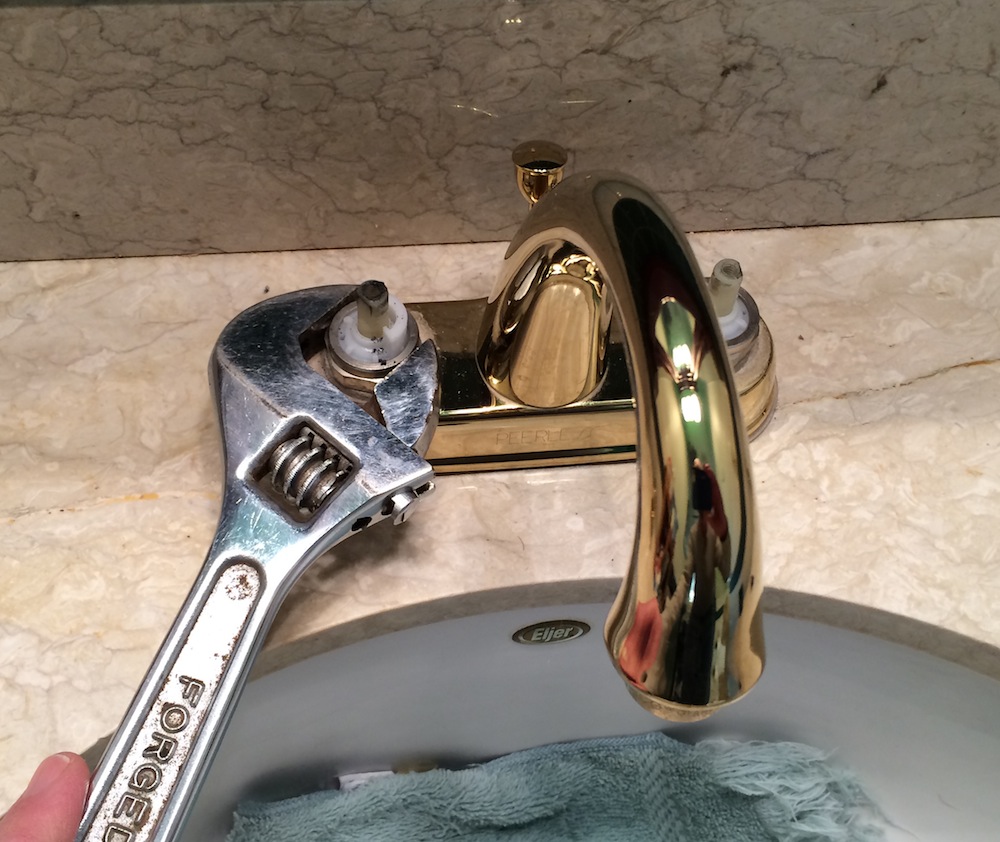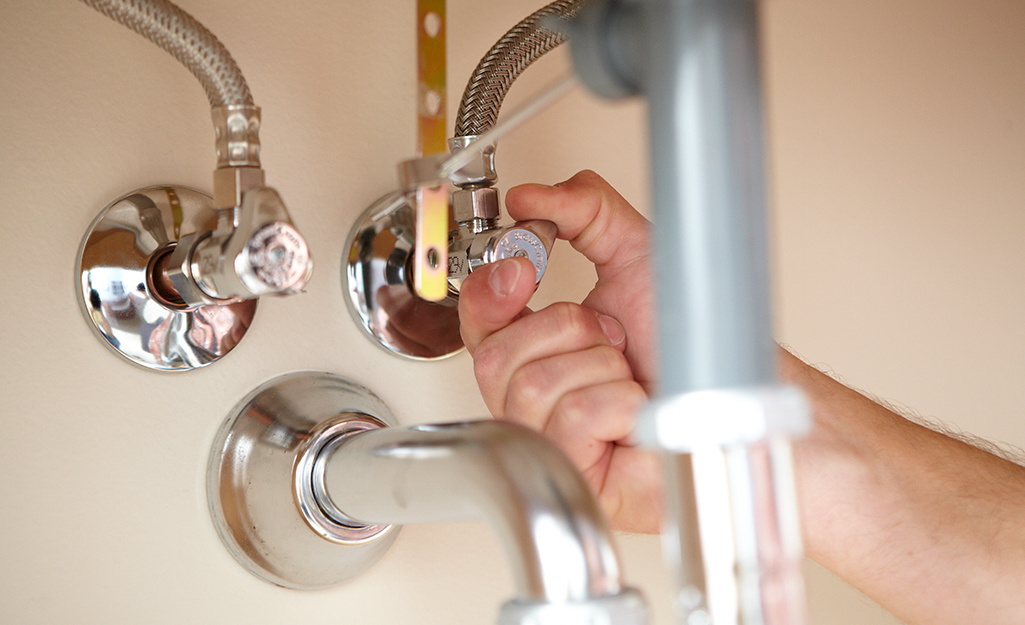They are making a few great observations about Water Dripping from Faucet: Why and How to Fix in general in the content directly below.

Leaking taps might appear like a minor aggravation, however their effect goes beyond just the aggravation of the sound. From drainage to incurring unneeded economic prices and health and wellness risks, disregarding a trickling tap can lead to numerous repercussions. In this short article, we'll look into why it's crucial to resolve this common household problem quickly and properly.
Wastefulness of Water
Environmental Influence
Dripping faucets add substantially to water wastefulness. According to the Environmental Protection Agency (EPA), a single tap dripping at one drip per secondly can waste more than 3,000 gallons of water per year. This not only stress water sources yet additionally affects ecosystems and wild animals dependent on them.
Financial Costs
Increased Water Expenses
Beyond the environmental effect, dripping faucets can pump up water bills substantially. The accumulated wastefulness with time equates into greater utility costs, which can have been stayed clear of with timely repair services.
Prospective Residential Property Damage
In addition, extended trickling can result in harm to components and surfaces bordering the faucet. Water build-up can create staining, deterioration, and also architectural problems if left neglected, resulting in added repair costs.
Health Concerns
Mold And Mildew and Mold Development
The consistent existence of wetness from a dripping faucet creates an optimal atmosphere for mold and mildew and mold growth. These fungi not just jeopardize interior air high quality but additionally present health and wellness threats, especially for people with respiratory system conditions or allergies.
Waterborne Diseases
Stationary water in dripping taps can come to be a breeding ground for germs and various other pathogens, enhancing the risk of waterborne illness. Impurities such as Legionella bacteria thrive in stationary water, possibly leading to significant health problems when consumed or inhaled.
DIY vs. Professional Repair service
Benefits and drawbacks of DIY Fixing
While some might try to deal with a leaking tap themselves, DIY repairs include their own collection of difficulties. Without correct knowledge and tools, DIY efforts can exacerbate the problem or result in insufficient repair work, extending the problem.
Advantages of Hiring a Specialist Plumber
Employing a professional plumber ensures that the underlying root cause of the dripping faucet is addressed effectively. Plumbers have the expertise and equipment to diagnose and repair faucet problems effectively, conserving time and decreasing the danger of further damage.
Step-by-Step Guide to Repairing a Dripping Faucet
Devices Called for
Before trying to repair a leaking tap, collect the needed devices, consisting of an adjustable wrench, screwdrivers, substitute parts (such as washers or cartridges), and plumber's tape.
Common Tap Issues and Their Solutions
Recognize the kind of faucet and the details problem triggering the drip. Typical problems consist of worn-out washing machines, corroded valve seats, or defective O-rings. Describe producer guidelines or on the internet tutorials for detailed assistance on fixings.
Safety nets
Regular Maintenance Tips
To prevent leaking faucets, carry out regular upkeep such as cleaning up aerators, evaluating for leaks, and changing worn-out components immediately. In addition, think about installing water-saving tools or upgrading to a lot more reliable fixtures.
Importance of Prompt Fixes
Dealing with leaking taps as quickly as they're discovered protects against more water wastage and potential damage, ultimately conserving both water and cash in the future.
Impact on Property Value
Understanding of Well-Maintained Building
Keeping a home in good condition, including attending to maintenance issues like trickling taps, improves its viewed value and value among potential buyers or tenants.
Influence on Resale Worth
Qualities with properly maintained plumbing components, consisting of faucets, command greater resale worths in the property market. Attending to leaking faucets can add to a positive impact throughout residential or commercial property inspections and settlements.
Environmental Obligation
Private Contribution to Conservation
Taking duty for taking care of dripping taps straightens with broader efforts towards water preservation and ecological sustainability. Every individual's actions jointly make a considerable influence on preserving valuable sources.
Sustainable Living Practices
By prioritizing timely fixings and adopting water-saving behaviors, people contribute to sustainable living practices that benefit both present and future generations.
Conclusion
Attending to a trickling faucet surpasses plain ease; it's an essential step towards saving water, reducing financial prices, and protecting health and home. Whether via DIY repairs or expert assistance, doing something about it to deal with leaking taps is a little yet impactful way to advertise liable stewardship of sources and contribute to a healthier, more sustainable future.
How to Fix a Dripping or Leaky Faucet
A leaking faucet is one of the most common problems that homeowners encounter, but it being commonplace doesn’t make it any less annoying. The constant drip drip drip of a leaking bathtub faucet, showerhead, or sink tap can disturb your home’s serenity. Left neglected, a dripping faucet can also result in higher water bills and discoloration or mold growth in your sink or plumbing fixtures.
Fortunately, you don’t have to be a trained plumber to know how to stop a dripping faucet. With some basic tools, replacement parts, and a little patience, leaky faucet repair is a breeze. In this article, we’ll explain what causes dripping faucets and how you can fix them.
What Causes a Leaking Faucet?
Kitchen and bathroom faucets come in all manner of designs, but most involve some combination of valves, O-rings, seals, and washers. The O-ring is usually the weakest link, but any one of these pieces can wear down over time. Heat, moisture, temperature fluctuations, minerals, mold, and movement can contribute to warping and corrosion, breaking the watertight seal. This just comes with the territory of being a homeowner. Everything is always subject to wear and tear, and some component parts of your appliances and fixtures need to be replaced on occasion. At least replacement O-rings are cheap!
More rarely, dripping faucets can be a symptom of excessively high water pressure. Were this the case in your home, you would probably notice that the leak is not isolated to one faucet. Water pressure issues are harder to resolve on your own. We recommend contacting a professional plumber if you suspect your water pressure is too high.
How to Fix a Dripping Faucet
Pipe wrench or monkey wrench Allen wrench set Screwdrivers Old towel or rag Shut off the water.
Before you do anything, you need to turn off the water to keep from drenching your kitchen or bathroom. You should find a valve under the sink and against the wall. Once you’ve turned this valve, try turning the faucet on to confirm that the water source has been cut off.
If you can’t locate your local valve for the faucet you’re working on, you can always shut off the water to the house at the main valve. Of course, this will prohibit anyone from using the sinks, showers, or toilets while you’re working on the faucet that’s giving you trouble.
Plug or block the drain.
You’ll be disassembling the faucet and removing some small bits of hardware. Plug the drain with a stopper or rag to avoid the possibility of a small screw falling into your P-trap.
Take apart the faucet assembly.
There are several varieties of kitchen and bathroom faucets, each with its own manner of assembly. For detailed instructions on how to disassemble your faucet, you can refer to the fixture’s manual or contact the manufacturer. If you know whether you have a ball, disc, cartridge, or compression faucet, you can find detailed schematics online.
In general, you need to begin by removing the faucet handles. You might notice a small screw that you’ll need to remove with a screwdriver or Allen wrench. If you don’t see any visible securing hardware, it’s likely hidden under a decorative cap that can be unscrewed or popped off with flathead screwdriver.
Remove each piece methodically, consulting a schematic when necessary. Take notes or arrange the pieces in such a way to make it easier to correctly reassemble the faucet later.
Remove the cartridge.
Once you’ve removed the handles and securing hardware, you should be able to remove the valve cartridge or stem. Some cartridges will slide right out. Other faucet models will require you to loosen a nut with a pipe wrench before you can remove the valve stem.
Examine the exposed hardware.
With the cartridge or stem removed, inspect the component parts. Check the rubber O-rings for wear and tear. Also examine the seat washer for corrosion or other damage. These pieces are usually the responsible parties for a dripping faucet, but it’s worth inspecting the other component parts while you have the faucet disassembled.
Find replacement parts.
Once you’ve identified which faucet component has failed, find an identical replacement. Your local hardware store should have O-rings, seat washers, and other standard components in stock. If you have a luxury or uncommon faucet, you may have to contact the manufacturer for a replacement part.
It’s a good idea to take your old parts with you to the hardware store so you can compare them with the store’s inventory and be sure you’re purchasing the correct replacement.
Reassemble the faucet.
With your new parts in hand, reconstruct the faucet and handles. Don’t be tempted to overtighten screws or nuts. You might think this could create a better seal, but it can instead damage or bend a delicate part of the assembly and create a new problem for you.
Turn on the water and test the faucet.
The only thing left to do is test your work. Unplug the sink, turn the water back on, and try the faucet. Congratulate yourself on a job well done!
https://www.libertyhomeguard.com/how-to-fix-a-dripping-or-leaky-faucet/

We had been made aware of that article on through an acquaintance on our other blog. Are you aware of someone else who is interested in ? Feel free to promote it. Thanks a lot for taking the time to read it.